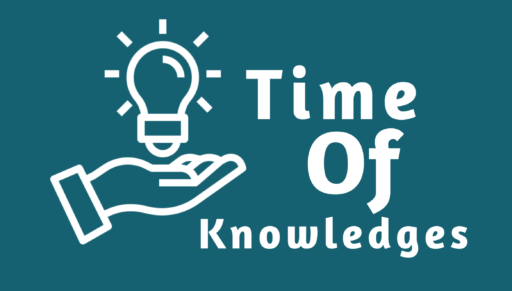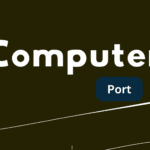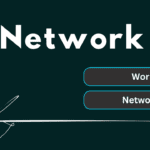networking, kya hai


“Network” ek aise system ya structure ko refer karta hai jisme multiple devices (jaise computers, smartphones, servers, printers, etc.) ek dusre se connect hote hain taki information ko share kiya ja sake. Yeh devices ek dusre se communication karne ke liye ek set of rules aur protocols ka use karte hain. Network ka basic concept hai data ko alag-alag devices ke beech share karna aur communication ko facilitate karna.
Prakar of Networks:
- Local Area Network (LAN):
- LAN ek chhota network hota hai jo typically ek building, office, ya campus ke andar hota hai.
- LAN mein devices jaise computers, printers, servers etc. local area ke through connect hote hain.
- LAN usually ek hi building ya ek restricted area mein use hota hai.
- Wide Area Network (WAN):
- WAN ek bada network hota hai jo bade geographic areas ko cover karta hai, jaise ki countries, continents, ya global level par.
- Internet ek example hai WAN ka, jo multiple LANs aur other smaller networks ko connect karta hai worldwide.
- Wireless Networks:
- Wireless networks bina physical wires ke devices ko connect karte hain, jaise ki Wi-Fi networks.
- Wi-Fi networks LAN ka extension hai jo wireless communication ka use karta hai.
- Metropolitan Area Network (MAN):
- MAN ek network hai jo cities ko cover karta hai. Isme multiple LANs ko connect kiya jata hai ek city ya large town ke andar.
- Personal Area Network (PAN):
- PAN ek individual person ke devices ko connect karta hai, jaise ki Bluetooth se connected devices.
Network Working Detail:
Network kaam karne ke liye kuch key elements aur processes hote hain:
- Protocols:
- Networks ke liye protocols (rules) hote hain jo define karte hain ki devices kaise communicate karenge.
- Examples: TCP/IP (Transmission Control Protocol/Internet Protocol), HTTP (Hypertext Transfer Protocol), Wi-Fi (Wireless Fidelity) protocols etc.
- Devices:
- Network mein use hone wale devices include karte hain computers, routers, switches, modems, hubs, servers, printers, aur wireless access points.
- Har device ko unique address hota hai jise IP address kehte hain jisse communication identify hoti hai.
- Data Transmission:
- Data transmission network ke through hoti hai, jisme data packets ek device se doosre device tak transmit kiye jaate hain.
- Data transmission wired (Ethernet) aur wireless (Wi-Fi) mediums ke through hoti hai.
- Network Topology:
- Network topology refer karta hai network ke layout ya structure ko, jaise ki star topology, bus topology, ring topology, mesh topology etc.
- Routing and Switching:
- Routers aur switches network traffic ko manage karte hain, data ko correct path par forward karte hain taki data sahi destination tak pahunch sake.
- Security:
- Networks secure rakhne ke liye encryption, firewalls, aur other security measures ka use hota hai taki unauthorized access aur data breaches se bacha ja sake.
In summary, networks ek vital part hain modern computing aur communication ka, jo devices ko connect karte hain taki information ko efficiently share kiya ja sake. Har network type apne use case aur requirements ke according design kiya jata hai.
List
Based on your request for a “networking list,” I’ll provide a list of networking topics and terms that are commonly discussed in the context of computer networks and communications. These terms cover various aspects of networking technologies, protocols, devices, and concepts:
- Network Types:
- Local Area Network (LAN)
- Wide Area Network (WAN)
- Metropolitan Area Network (MAN)
- Personal Area Network (PAN)
- Campus Area Network (CAN)
- Storage Area Network (SAN)
- Virtual Private Network (VPN)
- Wireless LAN (WLAN)
- Ad hoc Network
- Peer-to-Peer Network (P2P)
- Networking Devices:
- Router
- Switch
- Hub
- Modem
- Access Point (AP)
- Firewall
- Bridge
- Repeater
- Gateway
- Network Interface Card (NIC)
- Networking Protocols:
- TCP/IP (Transmission Control Protocol/Internet Protocol)
- HTTP (Hypertext Transfer Protocol)
- HTTPS (HTTP Secure)
- FTP (File Transfer Protocol)
- SMTP (Simple Mail Transfer Protocol)
- POP3 (Post Office Protocol version 3)
- IMAP (Internet Message Access Protocol)
- DHCP (Dynamic Host Configuration Protocol)
- DNS (Domain Name System)
- SNMP (Simple Network Management Protocol)
- ARP (Address Resolution Protocol)
- ICMP (Internet Control Message Protocol)
- Network Topologies:
- Bus Topology
- Star Topology
- Ring Topology
- Mesh Topology
- Tree Topology
- Hybrid Topology
- Network Security:
- Authentication
- Encryption
- VPN (Virtual Private Network)
- Firewalls
- Intrusion Detection System (IDS)
- Intrusion Prevention System (IPS)
- Network Access Control (NAC)
- Security Policies
- Vulnerability Assessment
- Wireless Networking:
- Wi-Fi (Wireless Fidelity)
- Bluetooth
- Zigbee
- NFC (Near Field Communication)
- RFID (Radio Frequency Identification)
- Cellular Networks (3G, 4G, 5G)
- Wireless Security (WPA, WPA2, WEP)
- Network Management:
- Network Monitoring
- Performance Optimization
- Fault Detection and Resolution
- Bandwidth Management
- Traffic Analysis
- Configuration Management
- Network Backup and Recovery
- Internet of Things (IoT):
- IoT Networks and Protocols (MQTT, CoAP)
- IoT Device Management
- IoT Security
- Edge Computing
- Cloud Networking:
- Cloud Computing Models (IaaS, PaaS, SaaS)
- Virtualization
- Software-Defined Networking (SDN)
- Network Functions Virtualization (NFV)
- Hybrid Cloud Networking
- Network Troubleshooting and Diagnostics:
- Ping
- Traceroute
- Network Sniffing
- Packet Analysis
- Log Analysis
- Error Checking and Debugging
This list covers a wide range of networking topics and terms that are essential for understanding computer networks and communications systems. Each topic represents a fundamental aspect of networking technology, infrastructure, and management. Feel free to explore further into any of these areas for a deeper understanding of networking concepts.




















